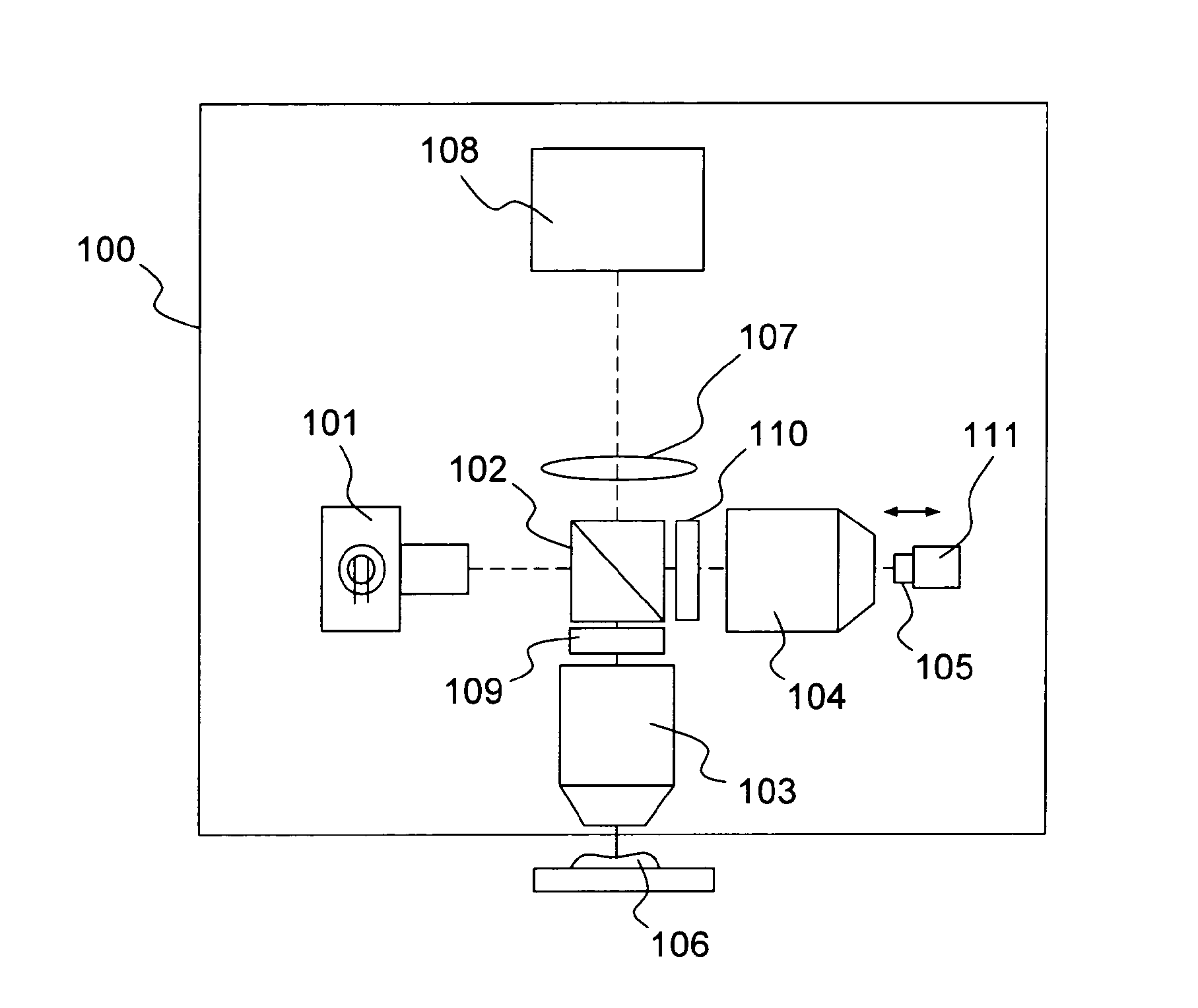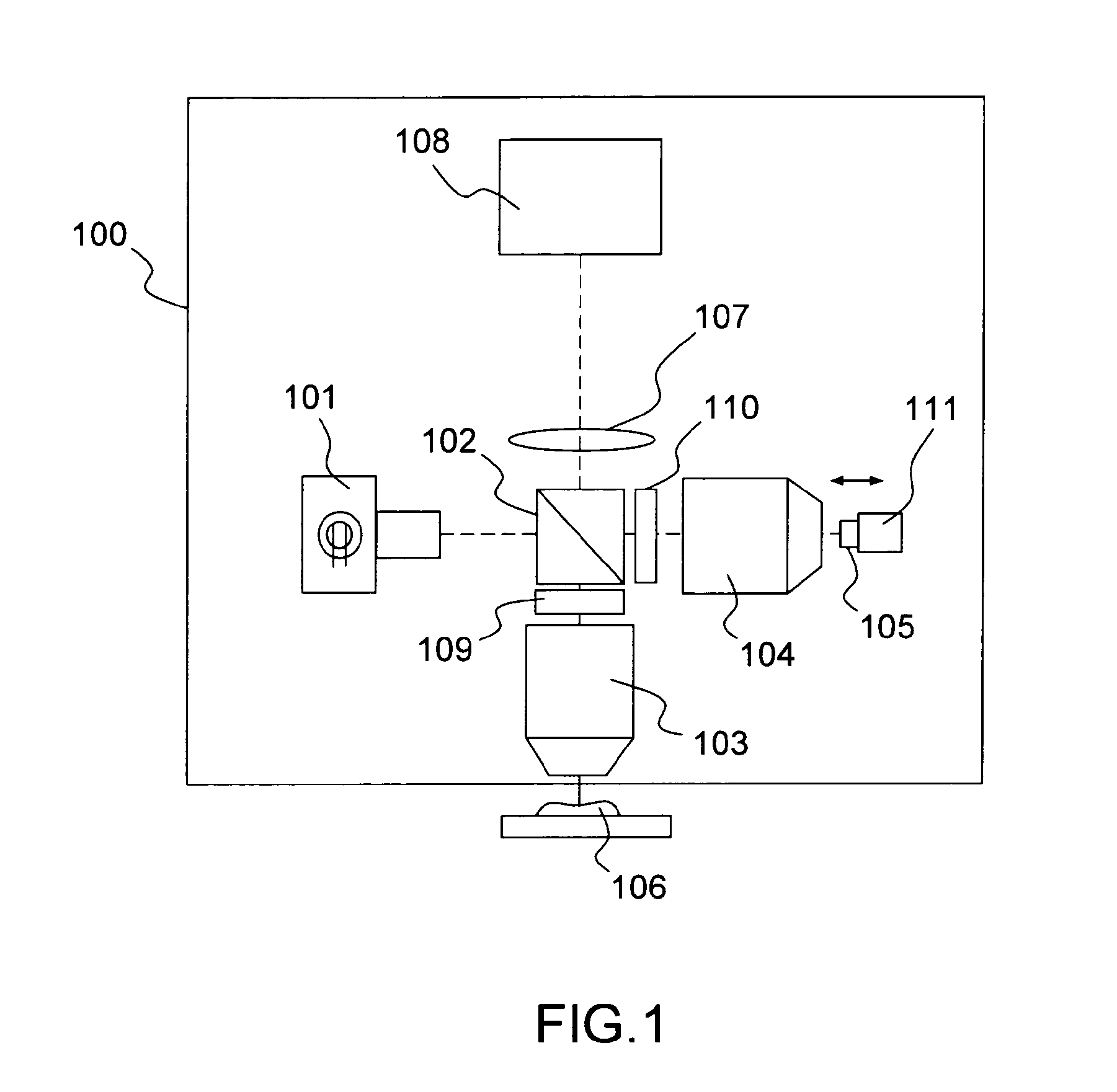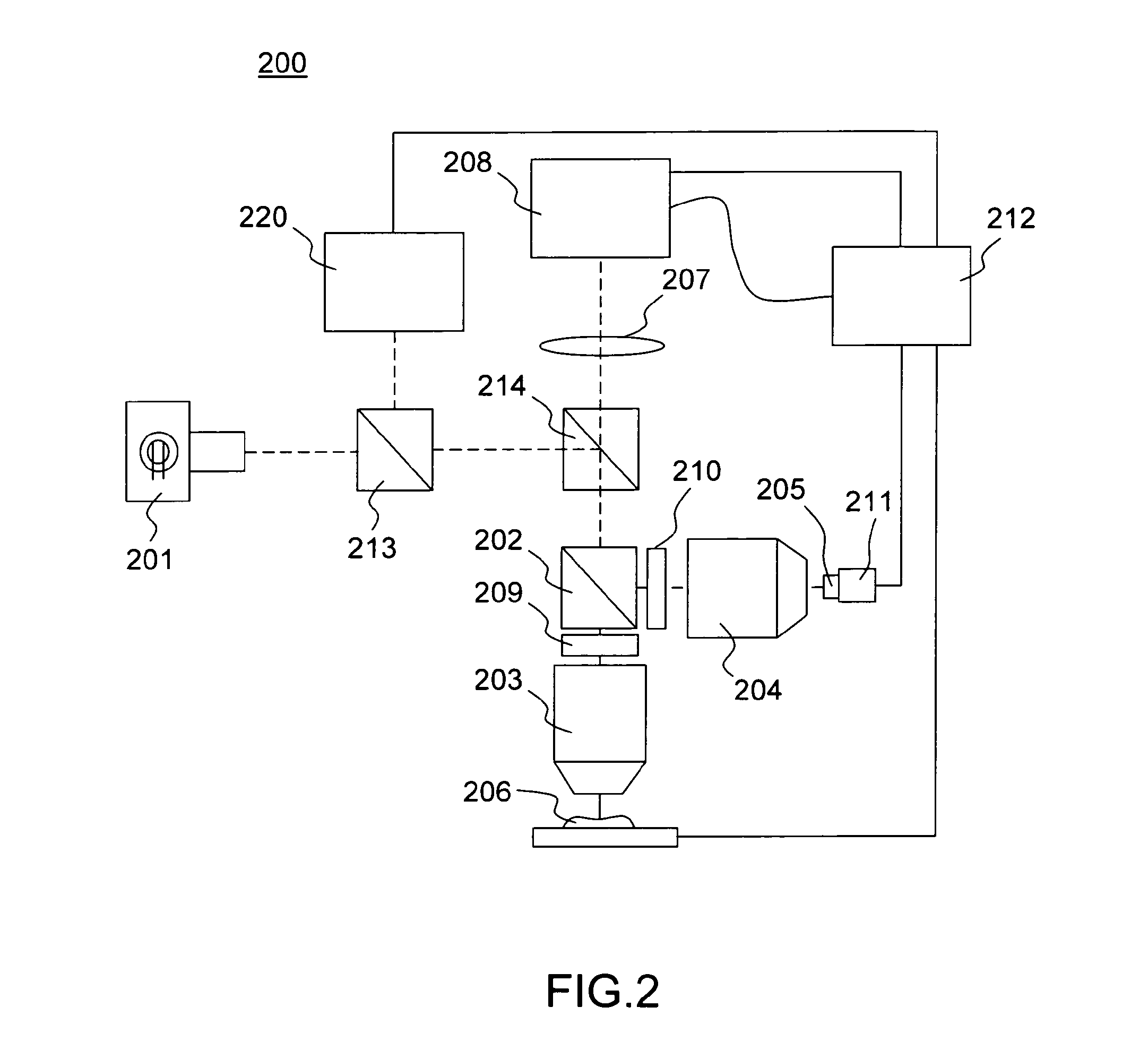Optical tissue sectioning using full field optical coherence tomography
a technology of optical coherence tomography and optical tissue, applied in the field of biomedical imaging, can solve the problems of mainly limited morphology and architecture information given by standard ff-oct images, and it is more difficult to get sharp images at the cellular level of virtual thin slices at large depths, and achieve the effect of easy combination and/or separation
- Summary
- Abstract
- Description
- Claims
- Application Information
AI Technical Summary
Benefits of technology
Problems solved by technology
Method used
Image
Examples
first embodiment
[0051]FIG. 4 shows an experimental system according to a multimodal FF-OCT system according to the present disclosure incorporating a structured illumination microscope. The system 400 is a Full-Field Optical Coherence Tomography microscope including an additional sectioning capability for providing both a tomographic image and a fluorescent image of a sample.
[0052]The microscope 400 comprises a source 401 which is spatially and temporally low coherent, typically a halogen or xenon lamp or a LED or combination of LEDS, and an imaging interferometer comprising a beamsplitter 402, typically a non-polarizing beamsplitter cube, defining two interferometric arms. Both arms include a microscope objective 403 and 404 of the same characteristics. In one arm, further named the reference arm, a uniform reflective surface 405 is positioned at the focal plane of the objective and linked to an oscillator 411, allowing modulation of the optical path length of the reference arm, e.g. a piezo elect...
second embodiment
[0064]FIG. 6 shows an experimental system according to a multimodal FF-OCT system incorporating a structure illumination module. The system is similar to the system of FIG. 4 except for the illumination subsystem and detection sub system. In the case of fluorescence imaging using SIM, the detected photons are the fluorescence photons added to the FFOCT photons. For optimizing the sensitivity of both techniques, it may be advantageous to separate the two imaging channel at the illumination and detection levels. In this way, one—or more—source 623 of optimal characteristics for fluorescence excitation, for example with a spectrum corresponding to the excitation spectrum of the fluorescent dye used, is used to illuminate the sample 606 through a mask 621 of variable spatial transmittance, e..g a grid, modulated by the oscillator 622, as already described in FIG. 4. The grid 621 is conjugated with the sample imaging plane using optics 630 and 603, and this SIM illuminator is inserted in...
PUM
 Login to View More
Login to View More Abstract
Description
Claims
Application Information
 Login to View More
Login to View More - R&D
- Intellectual Property
- Life Sciences
- Materials
- Tech Scout
- Unparalleled Data Quality
- Higher Quality Content
- 60% Fewer Hallucinations
Browse by: Latest US Patents, China's latest patents, Technical Efficacy Thesaurus, Application Domain, Technology Topic, Popular Technical Reports.
© 2025 PatSnap. All rights reserved.Legal|Privacy policy|Modern Slavery Act Transparency Statement|Sitemap|About US| Contact US: help@patsnap.com



